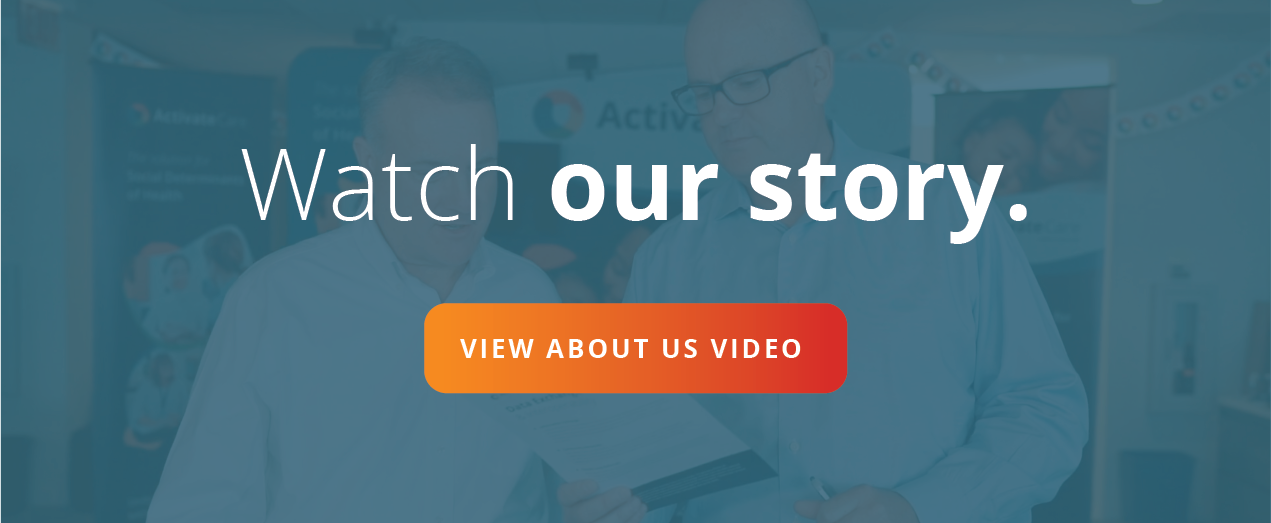In my five years working at Activate Care, I’ve found my passion for creating best-of-breed care coordination technology and bringing it to people who need it the most. Most often, these are front-line clinical workers supporting vulnerable populations, such as individuals with experiences of homelessness. We are in existence to support many diverse health and social care organizations across the country that are developing, staffing, and delivering SDOH (social determinants of health) interventions.
This focus is how we approach equity as a tech company. Equity is critical to SDOH success. But there is a risk that community information exchange (CIE)* strategies that are designed to help address social needs may not intentionally integrate equity, or even worse, may unintentionally perpetuate inequity. Building data infrastructure without an equity lens and understanding of historical context has the potential to exacerbate existing inequalities along the lines of race, gender, socio-economic status, and access. Instead, we must understand the historical and structural inequalities that form the context of our work, and make every effort possible to center equity throughout data integration.
What is community information exchange?
According to San Diego 211, which originated this concept, CIE is “an ecosystem comprised of multidisciplinary network partners that use a shared language, a resource database, and an integrated technology platform to deliver enhanced community care planning.” By focusing on these core components, community information exchange enables communities to shift away from “a reactive approach to providing care toward proactive, holistic, person-centered care.”
Across the Activate Care network in the United States, we see many examples of cross sector partnerships including social service, community, government, and physical and behavioral health providers, who commit to coordinating care so that individuals receive better quality care, and have better access to the care and supports they need to improve their health:
- Marin County, California: California’s Medicaid-funded Whole Person Care project gave county health and human services departments the flexibility and funding needed to redesign and integrate care for people with experiences of homelessness and serious mental illness. The results are incredible, including huge reductions in the number of homeless and chronically homeless individuals across the state.
- Western Oregon: The state of Oregon has pushed forward a number of community information exchange projects lately, including the Medicaid managed care model known as “coordinated care organizations” or CCOs, for short. These CCOs integrate physical, behavioral, and dental services and have strict requirements around data sharing and care coordination, which Activate Care supports.
- Metro Boston: One of our earliest and most successful customers is Boston Medical Center, where we have supported a number of impressive SDOH interventions. One example is the Telehealth Epilepsy Care Collaborative, which has redesigned how children with neurological disorders access specialty care in partnership with their local FQHCs.
How community information exchange strategies should approach equity
Many healthcare and community-based organizations are implementing social determinants of health interventions within their communities to help improve health outcomes. These interventions mainly target populations from historically underinvested communities, whose experiences of our healthcare system unfortunately include discrimination and disparities in care. When these interventions do not yield the desired results, we have to examine whether the intervention was designed in an equity-informed manner.
While the term health equity is used widely, a common understanding of what it means is lacking. According to the Robert Wood Johnson Foundation, health equity means that everyone has a fair and just opportunity to be as healthy as possible. This requires removing obstacles to health such as poverty, discrimination, and their consequences, including powerlessness and lack of access to good jobs with fair pay, quality education and housing, safe environments, and health care.
The cross-sector data sharing and integration components of a community information exchange strategy can enable the transformation of individual-level information into actionable intelligence with many potential benefits for health equity in the community:
-
Data analytics can be used to understand urgent and long-term community needs.
-
Data sharing helps to improve services, systems, and practices.
-
Integration is a core part of developing innovative policies and interventions
In these ways, community information exchange helps to build stronger communities. We need to be cognizant of the ways that cross-sector data are used, so that we do not inadvertently reinforce legacies of inequitable policies. We need to work together to create a new kind of data infrastructure - one that helps to produce more equitable resource allocation, access, and outcomes. Will you join us?
*‘Community Information Exchange’ and/or ‘CIE’ are registered trademarks of Community Information Exchange, Inc., and no claim of ownership is made thereto by any use herein.
